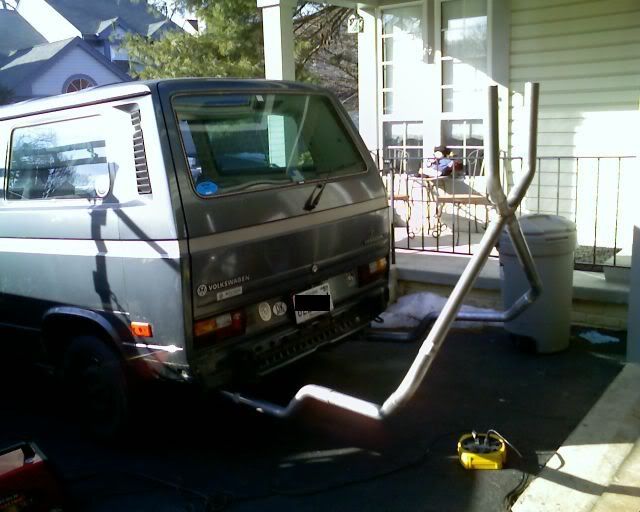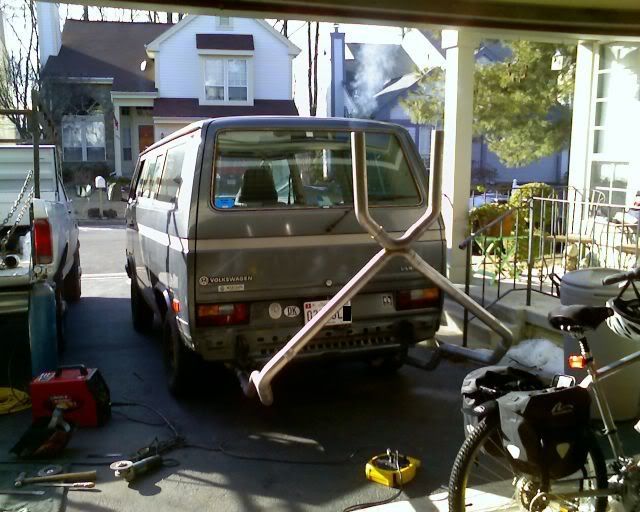More then once I've had people ask me "Why do I even need a PCV valve? Can't I just cap it off?" Unlike most other things that are classified as "Emissions Controls Devices," the PCV valve is not useless. PCV stands for "Positive Crankcase Ventilation." What in the world does that mean? To get to the bottom of this, first we'll have to go over some basics:
You should vent the crankcase: We all know about the top of the pistons going through the 4 stroke cycle, but some of us forget about what is going on under the piston, in the crankcase. The
crankcase is basically the entire "bottom half" of your engine, containing, you guessed it, the crank. Under the crank is usually a sea of oil, and above that, oil is being squirted or secreted out of many different holes and openings. As each piston drops, the pressure increases, and as each piston rises, the pressure decreases. If you pressurized the crankcase, the pistons would have to fight the pressure to move, so you have to vent the crankcase.
Ok, just cut a hole in the valve cover and put in a filter, that’s your vent, right? Well, it would work for that purpose, however, there are still two more concerns:
Blowby, and her ugly friend, Emissions: Because the seal of the piston rings is not perfect, during combustion, some of the unexploded or even burnt intake charge gets into the crankcase. This is called "blowby" and it gets worse as the car ages and the piston rings wear down. Blowby is a problem because it is acidic, possibly corrosive and
explosive. You wouldn't want those gasses igniting outside the combustion chamber, would you? The water vapor in blowby gasses can condense when you turn off the car and cause rust. If left alone, blowby can cause viscosity breakdown (thinning) of your oil, and to top it off, these unburned hydrocarbons are bad for the environment. So you shouldn't just stick a vacuum on your crankcase and suck everything out into the atmosphere. Besides, there is a cheaper solution then going out and buying a vacuum; because your engine's intake is already a vacuum!
So what the manufacturers did is they put a hole in one side of the crankcase and connected it to your air filter, so that it can take in fresh air. This is usually called a "Crankcase breather." On a "V" engine this is usually done on one valve cover, and then the other valve cover is connected to your intake manifold. That way, when you're driving, the engine will suck up all the hydrocarbons and burn them, and keep your crankcase under a vacuum.
Sounds great, right? "But Jason," I hear you saying "It's called a PCV
valve, why is there a valve there?" "Silence!" I'll yell, because you're interrupting me, you jerk.
So why use a valve? Your engine vacuum is not a constant. At idle, and at low engine loads and cruising, your engine produces lots of vacuum. However, at more aggressive driving (You know, like in DC?) the engine vacuum is much lower. To keep the vacuum in the crankcase high, they put a valve in that closes at low engine vacuum.
Another reason for the valve: inside the crankcase, oil is flying all over the place creating a mist, or just a splashing such a way that can get sucked into the engine through the PCV. That's mostly OK, as the engine can happily burn such a small amount of oil. However, it needs to be quite hot to burn the oil, and lean fuel mixtures from cruising are a lot more "oil burning friendly" then colder, rich fuel mixtures from hard driving.
Back in the 60s and earlier, cars used to just be equipped with a draft tube, which would just come straight out of the crankcase and out into the atmosphere. The "road draft tube" would use the air passing by to induce a vacuum. It would also randomly dump oil on the road, and just vent unburned hydrocarbons.
Some companies claim to have special PCV valves that make your car get 30% more fuel economy and the like, and like fuel line magnets, you should just ignore those.
A lot of people put "Oil Catchcans" on their PCV line, to catch the oil coming out before it gets into the engine. This keeps the inside of your intake manifold cleaner, and is a matter of personal preference for most vehicles. You can either make one yourself or just buy one pre-made online.
If your PCV valve goes bad, it will either fail "open" and always lets everything through, and that can lead to problems like oil-fouled spark plugs. The PCV can also fail closed, causing problems such as oil coming out your breather tube and soiling your air filter. If your system doesn't incorporate a breather tube, or it's clogged, your dipstick may pop off from the pressure, and your engine will run a little worse, possibly burning more oil.






































